My home studio and desk tour (2023)
Behind-the-scenes look at my video gear for YouTube plus my desks, storage, and studio accessories.
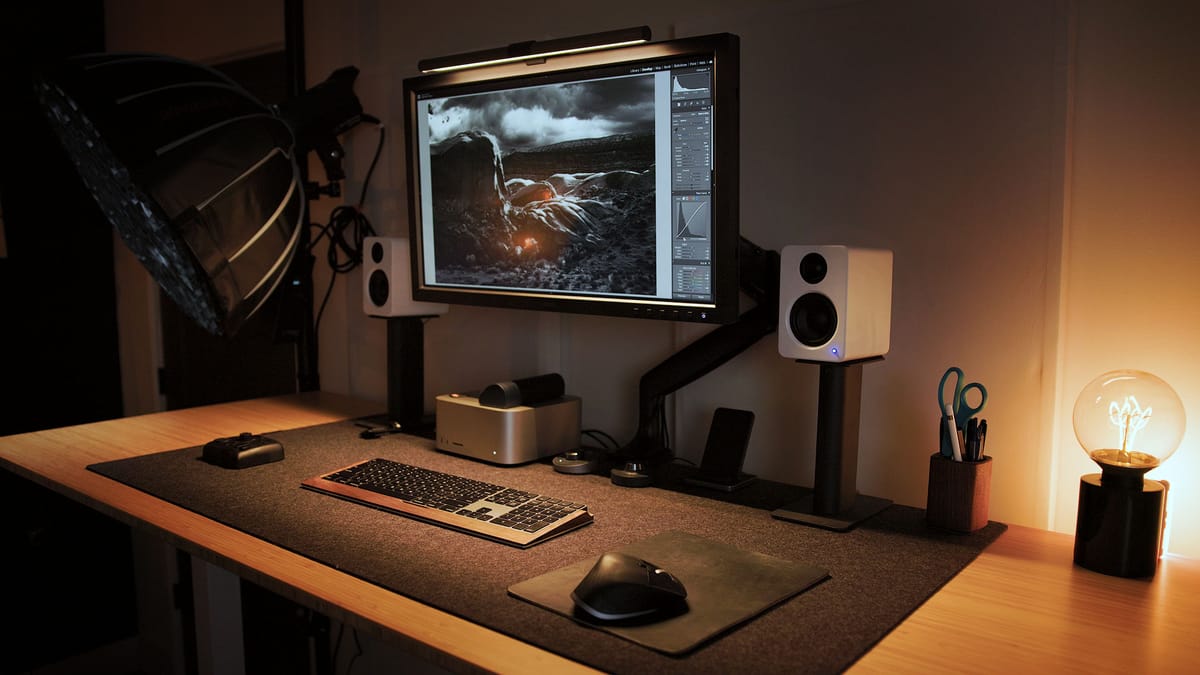
People contact me all the time asking about the gear I use to produce YouTube videos and what hardware I use for photo and video editing at my desk. I posted a video on this topic back in 2021, but since then a lot has changed. Here's a rundown of all the major things I now use in my home office/studio setup.
Disclaimer: This post and video is sponsored by Flexispot. Check out their storefront on Amazon for all the different standing desks they offer.
Camera and lenses
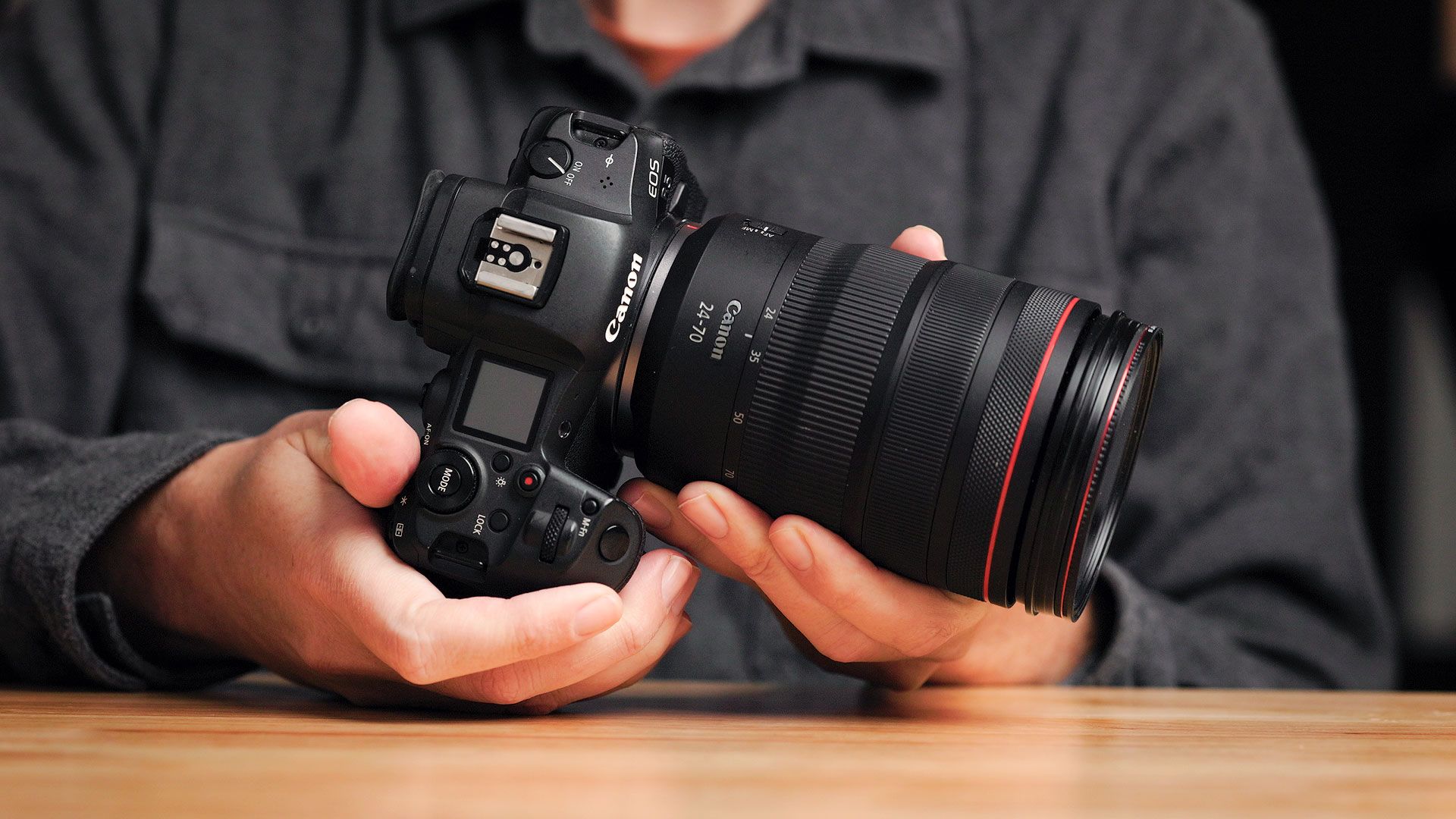
My main video camera is (still) a Canon EOS R5. I considered upgrading to an EOS R5C, but the lack of IBIS was a deal breaker for handheld still photography. I thought owning both an R5 and R5C was a bit much, so for now I'm sticking with the R5 and continuing to record long-form video externally to an Atomos Ninja V (so the R5 doesn't overheat and can record for longer than 30 minutes without shutting off).
I only use RF lenses now (sold all my EF glass). The RF 24-70mm f/2.8 is my main lens for just about everything. Whenever I need to shoot something close-up I use the RF 85mm f/2 Macro. Not my favorite lens (autofocus is dreadfully slow), but it creates nicely detailed, sharp product images and b-roll. I'd like to switch to an RF prime once Canon (hopefully) releases new models in 2023.
For videos, I typically mount a 82mm 1/8 glow mist filter to the front of my 24-70. This filter helps soften highlight roll-off, adds a little extra glow to practical lights, and takes some of the digital edge off. I like the lighter touch of the 1/8 filter, for its effect isn't as noticeable as the 1/4 option.
I record video on the Atomos Ninja with the R5 set to C-Log 3, BT.2020. I use this color space because the Atomos Ninja doesn't work well with Cinema Gamut. I then color grade footage in either Premiere or DaVinci Resolve using my Canon C-Log Exposure Correction LUTs. These LUTs conform the BT.2020 footage to Rec.709 and help save valuable time when editing.
Adjustable height desk
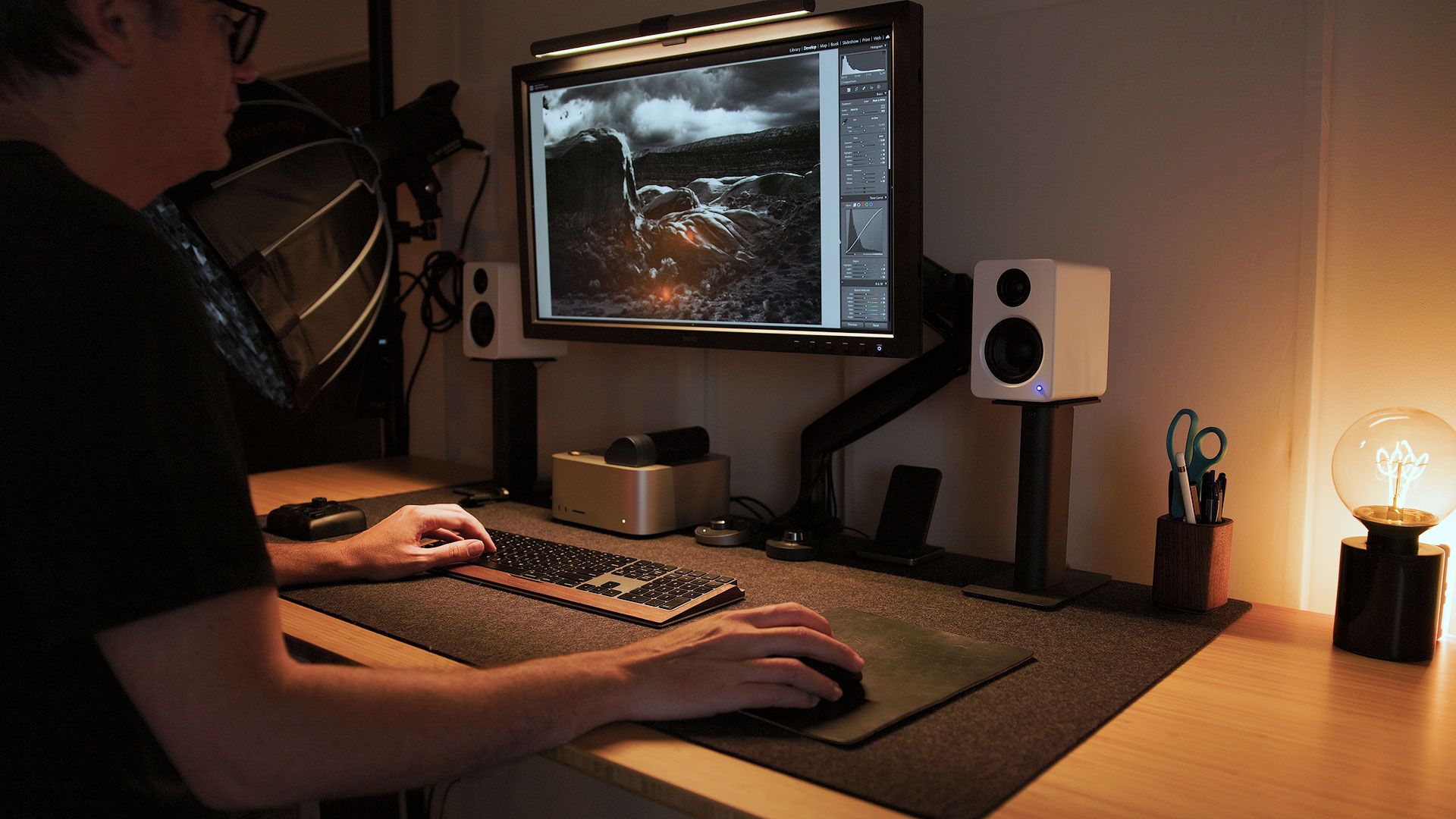
For years I used a glass table my wife and I bought nearly twenty years ago as my desk. I never really liked it, but it did the job. Last month I finally ditched the old table and upgraded to a proper standing desk made by Flexispot (the sponsor of this post and video). I'm using this 78x30" model which comes with a bamboo top, white metal legs, and a programmable control panel.
The desk automatically lifts and lowers and rises high enough for a six-foot-four guy like me. I typically spend about half my time sitting, half standing. I love having the option of both, for I can stand to help rejuvenate my energy and alertness, then sit when my feet and legs get tired.
Desk hardware and accessories
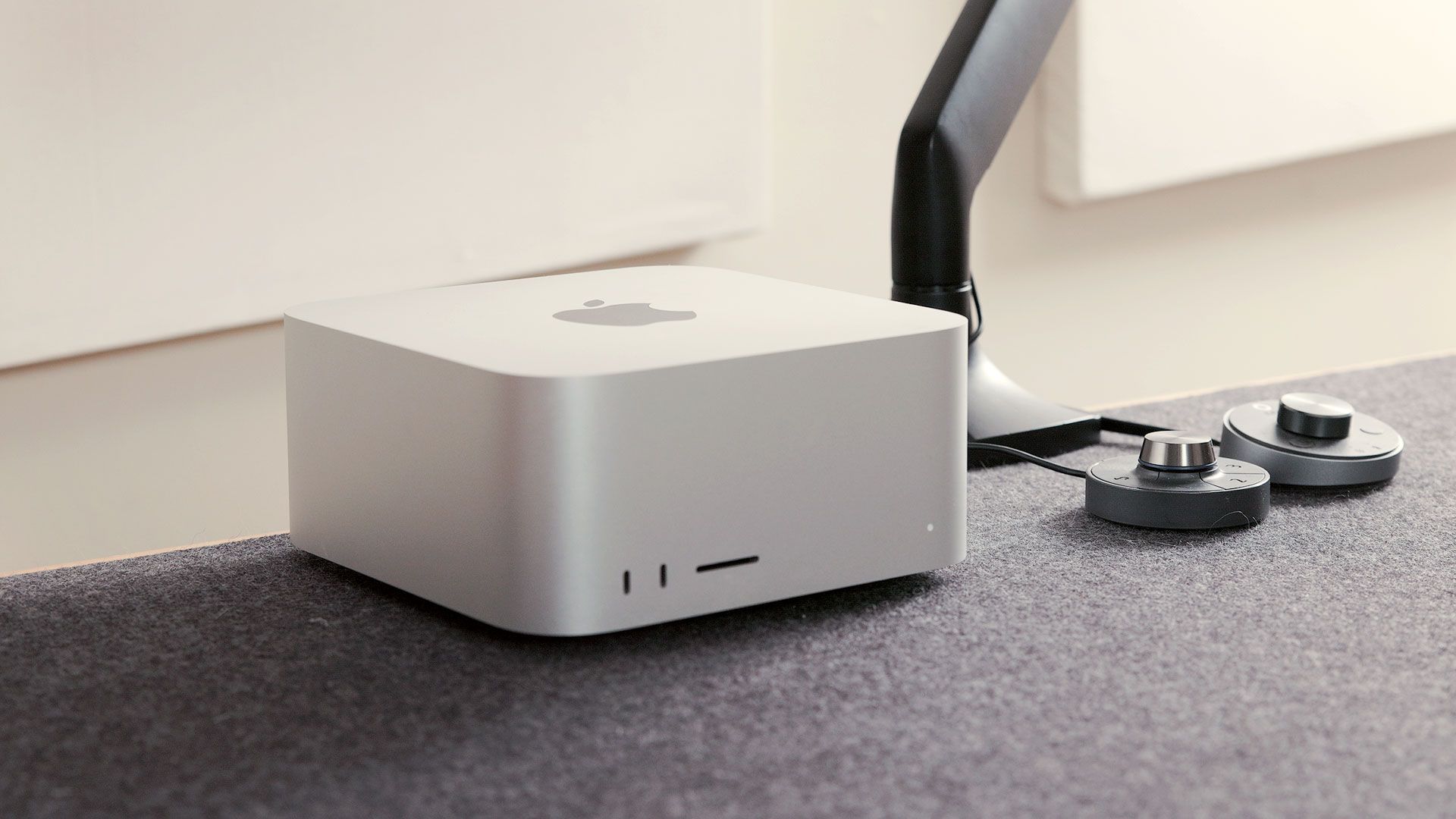
I use an Apple M1 Max Mac Studio with 32GB RAM and 1TB internal storage for all my photo and video editing. I wish I had paid a little more for 2TB of storage, but I'm getting by okay with external drives. The M1 Max is notably faster than the M1 Mac Mini I had before; especially when editing 4K h.265 video (no longer need to create proxy files). Photo editing feels more or less the same unless I'm editing big, multi-layered PSDs in Photoshop.
My monitor remains the BenQ SW271C. Still a great 4K, hardware calibrated display. I especially like how the display can switch color spaces between P3, Adobe RGB, Rec.709 and sRGB. This allows me to use P3 when editing raw photos, Rec.709 when editing video, and sRGB to check images and graphics produced for the web. Main downside of the SW271C is a gargantuan base, which I replaced with this monitor mounting arm.
On top of my display is a BenQ ScreenBar Plus, a minimal LED light fixture that casts soft ambient light onto my desk. I love how simple and clean it is, for it doesn't take up any desk space (unlike a desk lamp), and it also has adjustable brightness and color temperature.
Other notable desk hardware includes an OWC ThunderBay 8 for local photo and video storage, a Logitech MX Master 3 mouse, and a TourBox Elite. My speakers are made by Kanto with matching 9" stands to get the speakers higher towards ear level.
Work table for video
Next to my new Flexispot standing desk is a 72" adjustable height work table made by Husky. I bought this table for shooting videos so I could raise and lower the table instead of the camera when filming products and what-not. Much faster and easier that way. I wouldn't recommend it as a work desk however, for height is adjusted using a manual crank (which would get really old after a while), and the table doesn't get tall enough for true standing and working. But for everything else, great table.
Storage
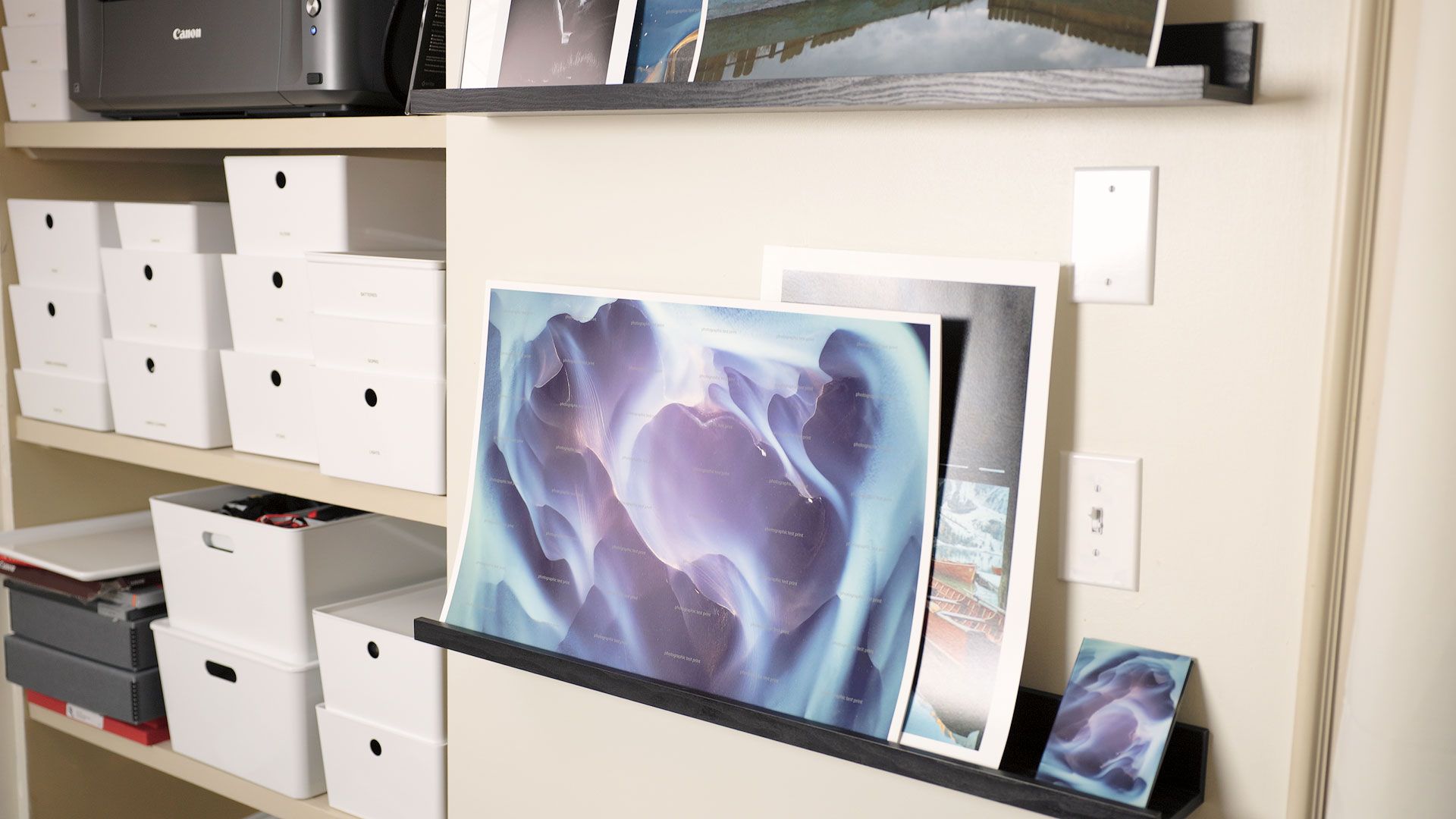
I am stupidly obsessed with IKEA KUGGIS storage boxes. They're clean, simple, and practically indestructible. Best of all, they're modular! Each box neatly stacks on top of the other, so you can mix and match different KUGGIS boxes together. I have about 30 KUGGIS boxes for audio gear, video gear, batteries and chargers, filters, drone stuff, GoPro stuff, paper, cables, lens caps and cases, memory cards, and everything else. I used a label maker to label them, for they'd be impossible to tell apart otherwise when stacked.
I enjoy making photography prints, but not spending money on expensive frames. I also like to live with prints for a while to ensure I'm happy with their processing, and that my excitement for an image continues long after it was created. I've solved this with simple picture rails around my desk that provide my prints a temporary place to sit before doing anything more with them. I got my rails at Wayfair, but they're nothing special. You can find these just about anywhere.
Lighting
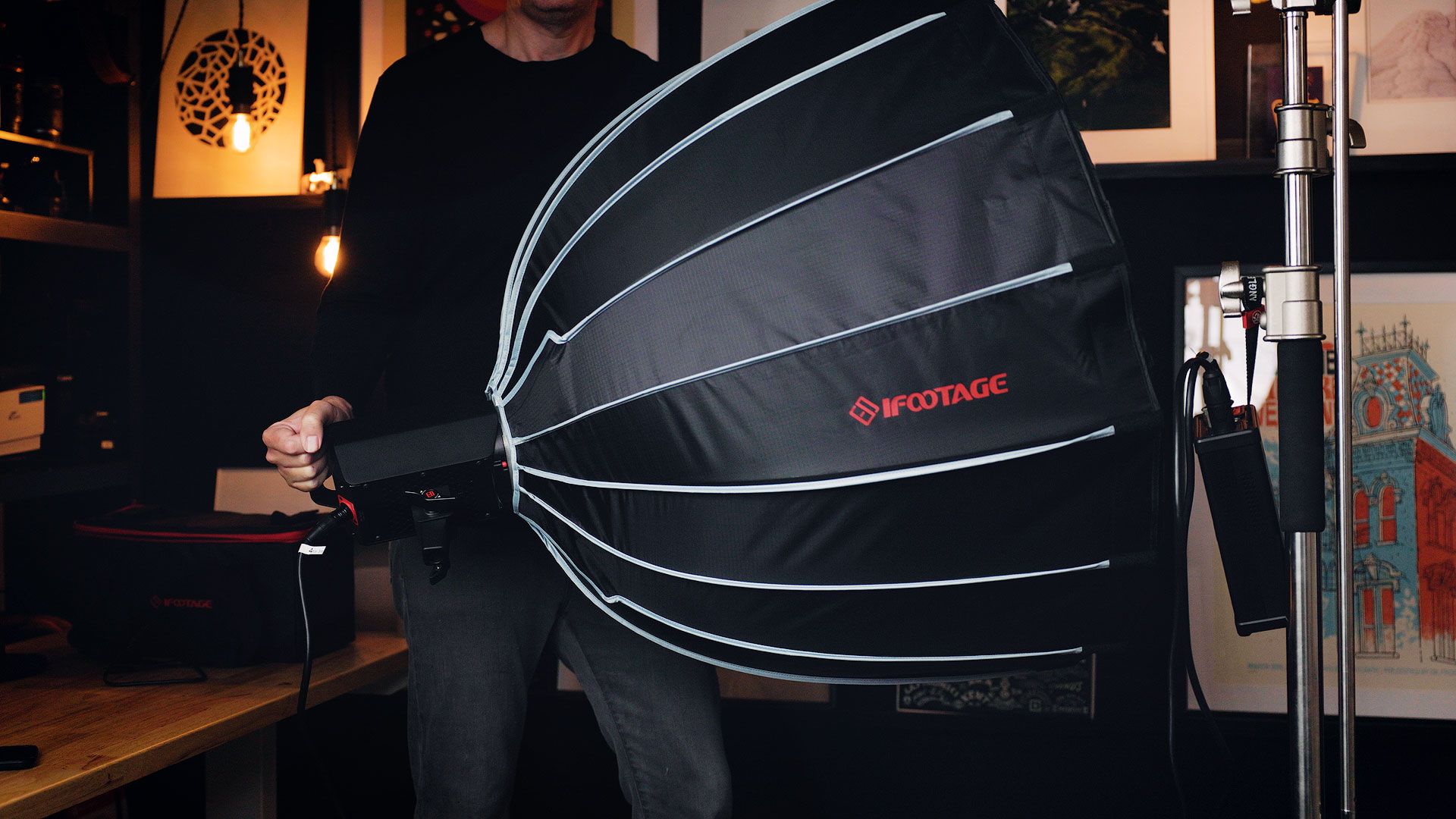
The lights I use for nearly everything are the Anglerfish 320DN, 220DN and 60DN made by iFootage. These are all daylight-balanced COB LEDs with a fixed color temperature of 5600 kelvin. You'll find plenty of LED lights from other companies with similar specifications, but what makes these lights special is their color accuracy. They're about as close as you can get to natural daylight.
For hanging and positioning lights I use Manfrotto Deluxe Autopoles with Impact Super Clamps and Extension Arms. I like using poles instead of conventional light stands and/or c-stands because they get lights up and off the floor (no legs to trip over!). I still setup c-stands when needed, but I prefer the poles.
Audio, music and SFX
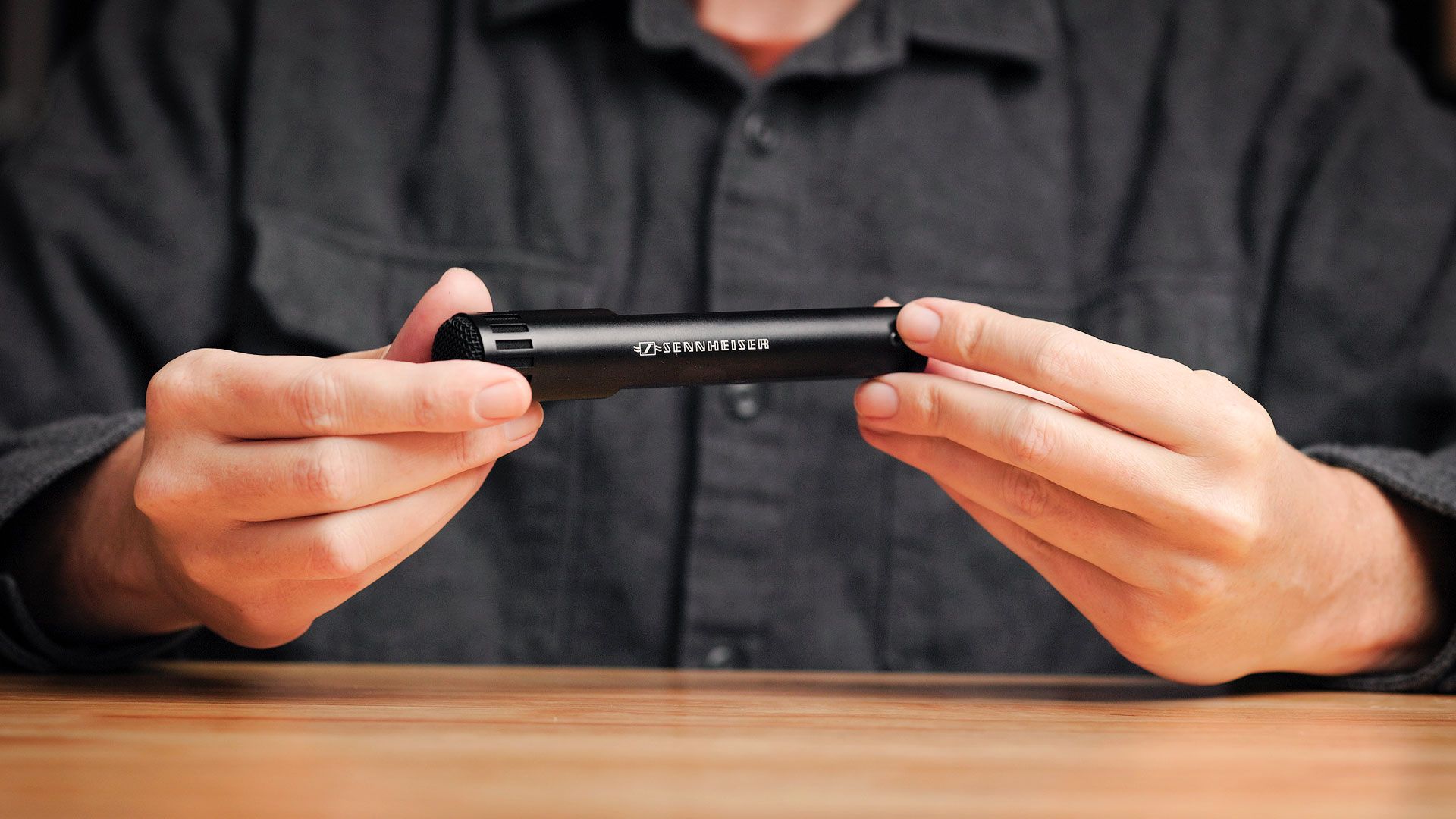
My current microphone is a Sennheiser MKH 50 P48. Expensive, but worth it ($1200 MSRP). I switched to this after using the similar MKH 416 for a couple of years, mainly because the MKH 50 is optimized for recording indoor vocals (while the 416 is more of a general purpose shotgun mic). Smaller and lighter as well. Great sounding microphone!
The MKH 50 is plugged into a Sound Devices MixPre 3 for recording dialogue to SD cards. I then synchronize that audio with the audio track recorded in-camera using Adobe Premiere. The MixPre 3 is a great recorder, but honestly I'd rather have a camera with a digital audio input and XLR connector to record audio directly to the actual video. Perhaps by next year I'll be using one of those.
I use a Neewer microphone boom arm, support holder and c-stand to get the microphone above my head and out of frame. This gives me total flexibility over where the microphone is positioned. When I'm done recording the whole thing breaks down quickly.
For mixing and sweetening audio I use Adobe Audition with FabFilter Plugins — specifically Pro-Q 3 (equalizer), Pro-C 2 (compressor), and Pro-DS (de-esser). Similar tools and functionality is built into Adobe Premiere, but I much prefer the design and user experience of these plugins.
In case you're curious about the acoustic panels on my walls, those are DIY wood frames with rectangular sheets of insulation inside. Their exteriors have been wrapped in fabric matching the color of the walls so they visually blend-in. The panels definitely help reduce room echo and reverb, though with with modern advances in artificial intelligence these could become quickly outdated.
All my music and sound effects come from Epidemic Sound, MusicBed and Audiio. Whatever style or mood I'm looking for, I can always find it through one of these providers. Especially love the simplicity of their licensing and user experience, for they can all be used in videos posted to YouTube and other social media networks. Here are some of my favorite tracks at Epidemic Sound.



